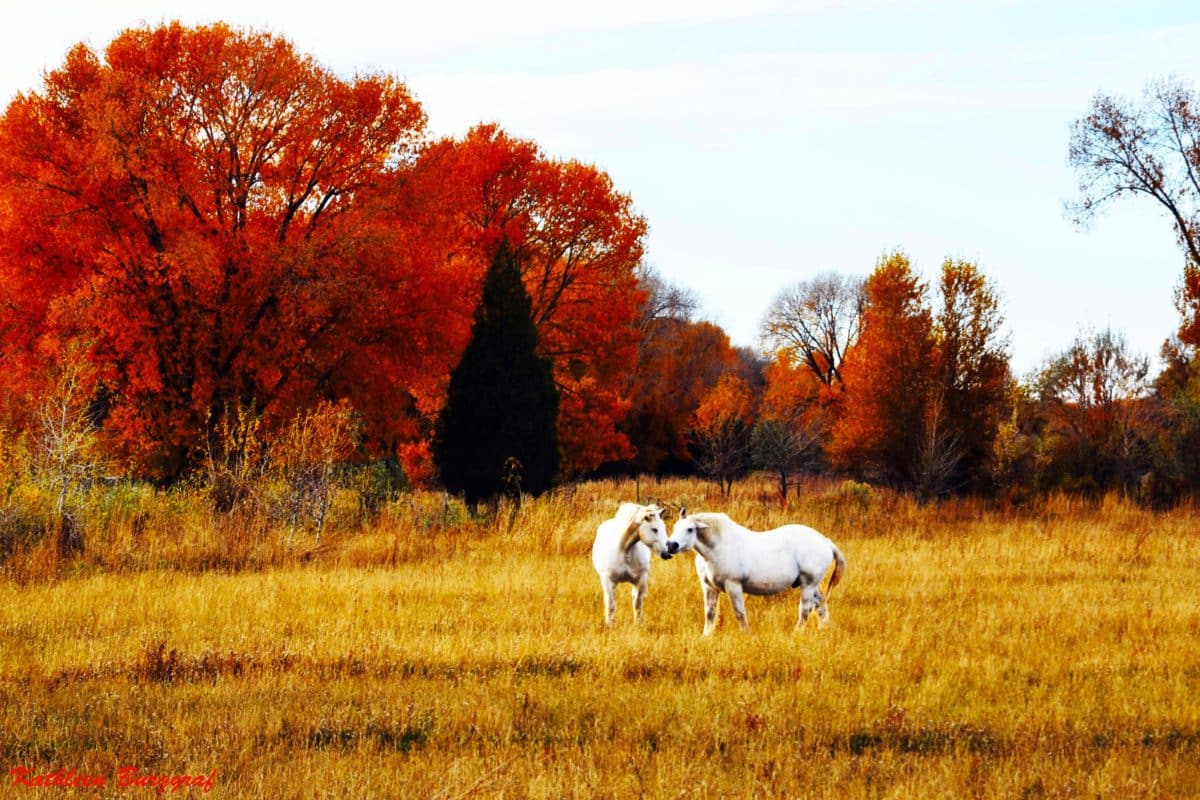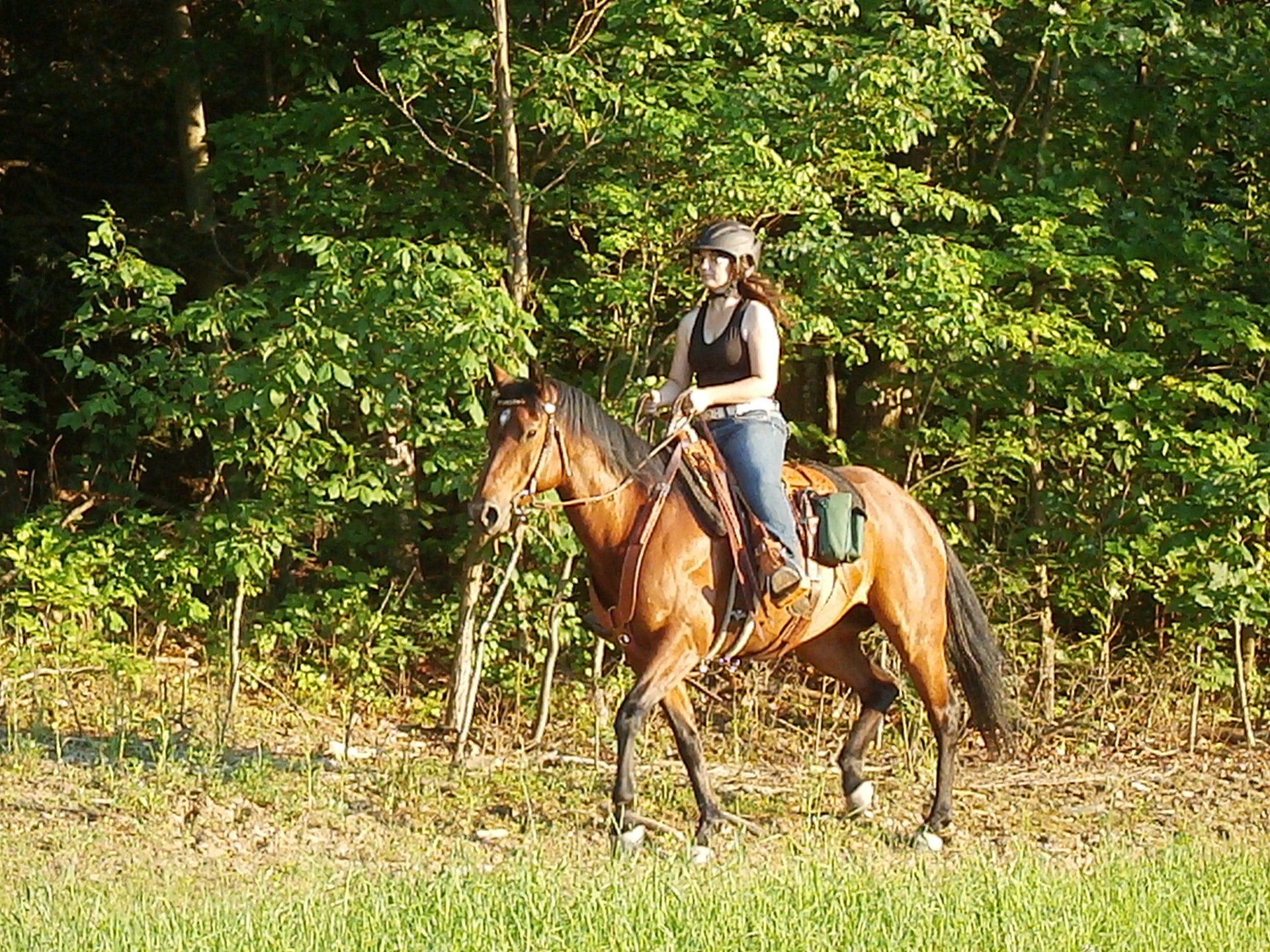
1. Let the horse catch you
We’ve all been there. It’s 4am the morning of the show. Everything is packed. The trailer is loaded and sitting in the driveway. You’re all turned out. All that’s left is to load the horse who is currently galloping around the pasture like a lunatic, covered in manure and mud, with a shredded sleazy as a cape screaming “look mom! I’m superman!” – well, ok, maybe not that last part, but we all know he’s thinking it. Catching has become a game to him that is invariably played at the most inconvenient times.
How do you prevent this nightmare scenario from happening?
First, don’t always catch the horse for work. Sometimes go out there and brush and love on him, bring him in for grooming and fun time. Make it worth his while to be caught. Make the incentive of the good stuff that could happen outweigh the bad.
Second, teach the horse to catch you. Even if he runs up to you, walk around him and make sure he is really paying attention to you before you put that halter on.
[bctt tweet=”#Tipoftheday – Make sure your #horse is paying attention to you before you catch him.” username=”EW_Blog”]
For more catching tips here is a great video from Warwick Schiller. I don’t swear by his methods most of the time, but he has some good stuff.
2. Never let your horse choose to walk away from you in the pasture
This one may seem odd, but it has made a world of difference with my crew. If you let your horse choose when to end the interaction, you put him in control. This makes a surprising amount of difference for many horses. When I turn them loose, I keep the rope around their neck until they relax and focus on me. Only when they stop trying to pull away and leave do I let them go.
If I walk up to them in the pasture to brush and fly spray them, I do not let them leave until I say they can leave. For some horses, this will require putting a rope around their neck. After a while most get to the point that all you have to do is tug on their mane to remind them to stay.
3. Break everything down into the smallest steps possible
The smaller steps you break things down into, the better the end result will be. Breaking every maneuver down into its most basic components allows more attention to detail during training. This may seem to slow down the process at the time, but in the end it will lead to better results.
4. Don’t rush: slow is smooth and smooth is fast
Too many times we find ourselves wanting to rush through the slow, boring stuff and get the fun part – running the barrel pattern, roping a calf, cutting a cow, riding a ranch horse pattern – but we have to remember that slower is faster. Slower allows us to pay attention to detail and gets a higher quality result in the end. The more you cut corners in the short-term, the more times you will need to go back and sill in gaps in the long-term.
5. Know your limits
Know your horse’s limits too. If you are not comfortable cantering, then don’t feel obligated to canter. If you or the horse some sort of injury that limits your ability to perform some maneuvers, then don’t feel obligated to push beyond what you can realistically do.
When I am riding Moose, I have to be careful approaching certain kinds of obstacles on her right side given her limited eyesight on the right from her eye injury. My own spinal injury also affects my balance, so there are some days when I have to restructure our ride to avoid anything faster than a walk. It’s all about knowing your limits and respecting them.
6. Don’t ask for too much at once
This goes right along with knowing your limits. Horses don’t need the same amount of repetition that people do. Some horses need repetition, but some horses sour very quickly, so repeating exercises more than 2 or 3 times can do more harm than good if your horse gets bored easily. Find ways to incorporate little manuevers such as backing or side passing into your every day riding so it doesn’t feel like you are drilling them.
7. But don’t set the bar too low either
Horses are under achievers. You will not get great results if you don’t set great expectations. Often horses will only give 80% of what they are capable of in the show pen. So set your expectations accordingly in the practice pen at home.
[bctt tweet=”#Tipoftheday – #Horses will only give 80% of what they are capable of in the show pen.” username=”EW_Blog”]
8. Know when to quit
Live to ride another day. Some days are going to be better than others. Some days you are going to accomplish a lot, but others you are going to feel like you accomplished nothing. It is important to learn when to call it quit. There are going to be times when continuing to push will only make things worse.
9. Always end as ride on a positive note
This one can be tricky. Some days the positive note can be a big one like achieving relaxation on the lunge or side passing for the first time. But it can also be a tiny positive note like not spooking at the rock that the horse has spent the entire ride spooking at for no other reason then he thinks it’s funny. Sometimes you have to take a win where you can get it.
What are some good horse training habits that you try to cultivate?
Share your tips and tricks in the comments below!









